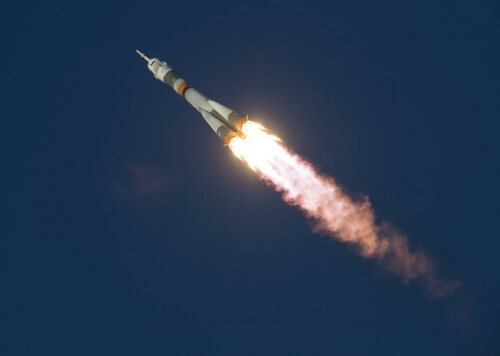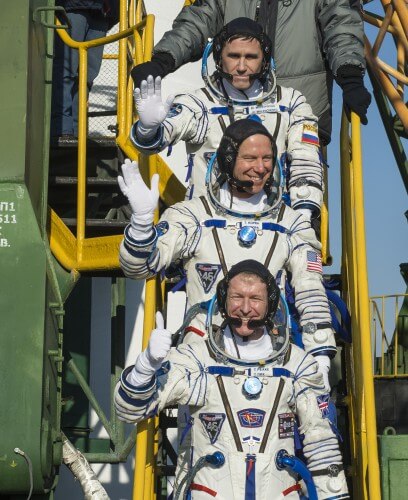
Five days after the safe return of the International Space Station's 45th crew, a Russian Soyuz spacecraft was launched today at 17:03 (local time) from the Baikonur Cosmodrome in Kazakhstan, carrying the second part of the station's 46th crew: Russian Yuri Melanchenko, Tim American Cooper and Tim Peake, the first British astronaut to travel to space as part of the European Space Agency.
After a six-hour journey to the International Space Station, the spacecraft arrived at the station and began the docking process. Usually the docking is done automatically, but the spacecraft's automatic system detected some kind of malfunction, and as a result the spacecraft moved away from the station and the spacecraft commander Malchenko took command of it and performed a successful manual docking.
The three astronauts will join the current crew on the station - American astronaut Scott Kelly and Russian cosmonauts Mikhail Kornienko and Sergey Valkov. Together, the six will make up the station's 46th crew, whose mission will end when the three veterans return to Israel in March 2016. Kelly and Kornienko will then complete a one-year mission in space, designed to examine the effects of prolonged space travel on astronauts (Kelly has an identical twin, also an astronaut , which remains in Israel and thus a comparison between them will be possible).

The Soyuz spacecraft carried not only astronauts but also three scientific experiments that NASA developed, to study the health effects of a long stay in space on astronauts. The experiments include a device for measuring and three-dimensional mapping of radiation levels at the station; An experiment in which the astronauts will continuously give samples to examine changes in their microbiota - bacteria that live in symbiosis with the human body and are important to human health; and a device for examining the levels of nitrous oxide in their exhalation, in order to study the development of infections in the astronauts' respiratory tracts, thus taking steps to reduce them.

One response
I asked Elisef Kosman how many people docked at the station